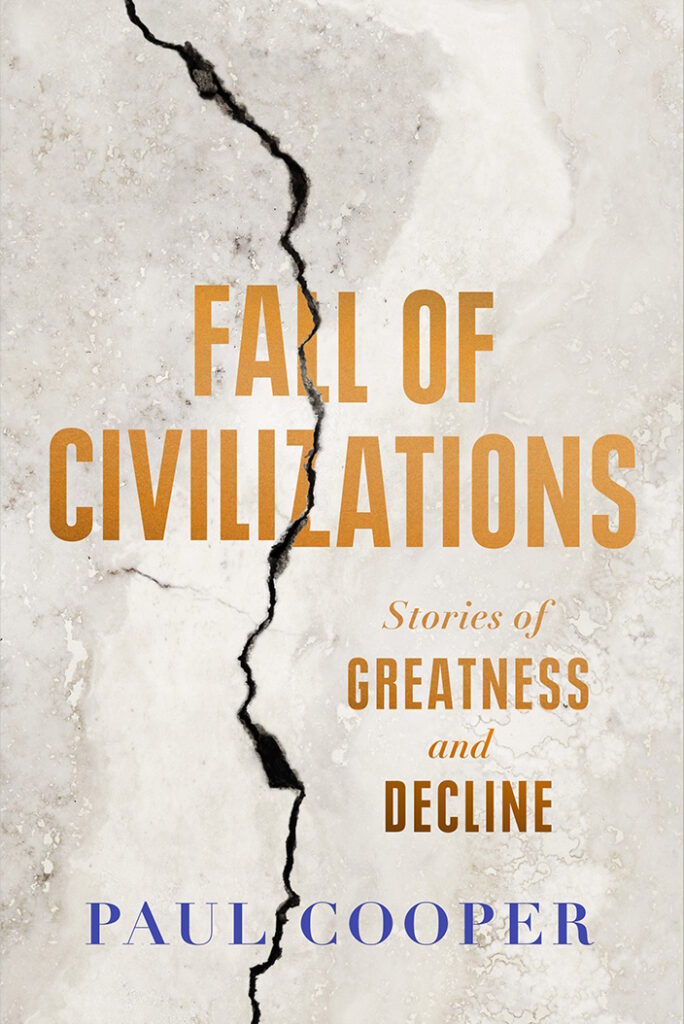The collapse of society on Easter Island is an oft-repeated cautionary tale of man-made ecocide, which blames an ignorant indigenous population for deforesting the island out of an obsession with stone statue building and greed, leading to societal collapse. But author Paul Cooper’s new book Fall of Civilizations makes a compelling case that the failure on Easter Island was actually due to the exploitation of the island by Europeans, and their introduced diseases.

The most recent evidence shows that the famous stone statues could be readily transported without the use of tree logs. Cooper also draws on the historical record to show that there were ample woodlands at first European contact and a wide variety of foods and animals, and the indigenes had developed ingenious techniques for efficient farming.
The civil war/collapse narrative is easily dismissed by comparative archaeological analysis. He goes on to demonstrate the widespread impact of slave raids, disease and, as a final deadly blow to the island’s trees, the corporate sheep grazing under Chilean rule.
The case for re-examination of the fall of Easter Island is the last chapter in Cooper’s book. It is the most surprising because it challenges the conventional narrative. However, the other chapters are equally captivating in other ways.
Starting with ancient times, we learn the fate of lost civilizations like the Sumerians and the Assyrians. The chapter on Roman Britain is a nice encapsulation of the larger problems encountered by the Roman Empire during its decline, but also shows that the Romans brought a high degree of order which disintegrated on their departure.
The stories continue into the Middle Ages including the Maya, Khmer, and multicultural Byzantium.
A striking theme in many of these stories is that once a civilization fell, its marvellous cities were often totally abandoned leaving behind some wondrous architecture and art in the ruins. The buildings at Angkor Wat are testament to exquisite craftsmanship, at a time where modern power tools could hardly be dreamed of.
The stories provide insights into unresolved dilemmas and the human condition. The origins of the instability in West Africa is revealed through the story of the Songhai, the brutality of man illustrated in the destruction of Carthage, and his greed and cruelty in the massacres of the Aztecs and Incas. But the stories also display the creativity and beauty that could be achieved.
Another insight is how quickly a civilization can collapse from its apparent zenith once a long-standing visionary ruler dies and both insiders and outside parties seek to grab power and wealth, as in Assyria, Vijayanagara (southern India) and Han China.
In the Epilog, Cooper takes the lessons of the past and looks to the future. His rational and wise logic is uncomfortable but hard to refute. I will not spoil the author’s conclusion and encourage you to read it for yourself.
These stories of fallen civilizations, covering five continents, are written in a style that avoids the curtness of a Wikipedia entry and the dense detail of academic works. Lively writing keeps the reader engaged as insights into our modern states are subtly revealed.
Fall of Civilizations is a highly readable, entertaining and informative book and a useful wakeup call for our modern, consumer-driven society.
The reviewer is the co-author of Court of the Grandchildren, a novel set in 2050s America.
Main picture credit: 1tamara2 via Pixabay

One Reply to “Fall of Civilizations”
Comments are closed.